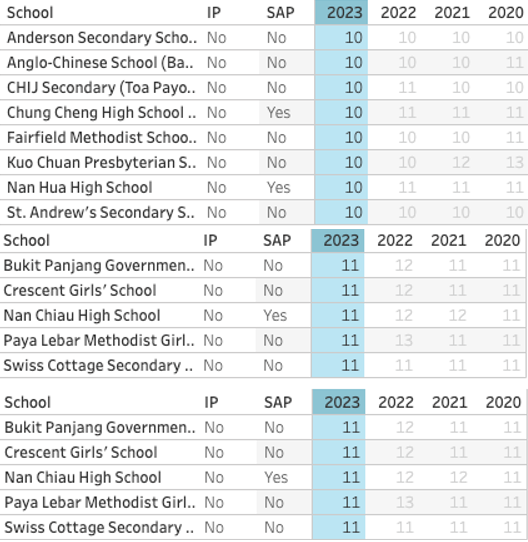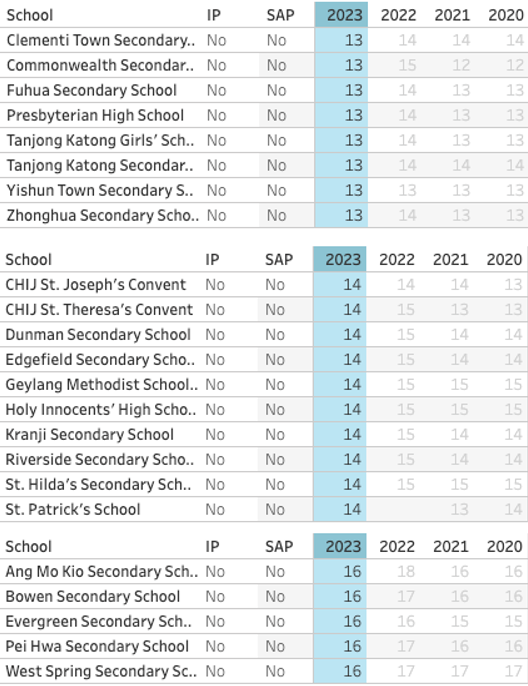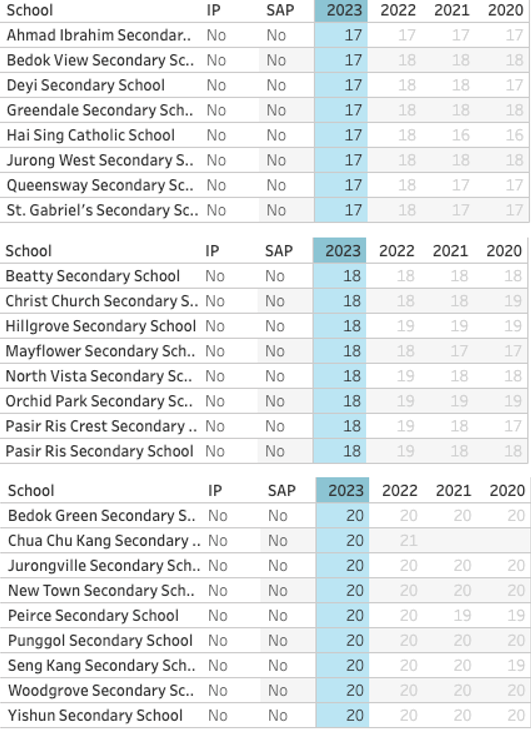As the PSLE 2024 approaches, parents and students alike are gearing up for one of life's significant milestones. The results of this examination will determine which secondary school a child will attend. A crucial factor in this process is understanding the secondary school cut-off points (COPs) for the previous year.
Why are COPs important?
While the emphasis on grades has been reduced nationally, the PSLE score remains a significant factor in determining secondary school placement. Knowing the COPs can help you and your child make informed decisions about their future.
Understanding Integrated Programme (IP)
The Express course offers two pathways: the GCE O-Level program and the Integrated Programme (IP). The GCE O-Level program is a traditional 4-year course leading to the GCE O-Level examination. In contrast, the IP is a 6-year program that combines Secondary 4 to 6 with Junior College. This unique structure allows students to directly progress to the GCE A-Level examination or the International Baccalaureate Diploma, bypassing the GCE O-Level examination. Additionally, some IP schools offer the NUS High School Diploma.
Understanding the Best Secondary Schools
It's important to differentiate between the hardest schools to qualify for and the best school for your child. The three hardest secondary schools to qualify for in 2023 were Methodist Girls' School (IP), Raffles Girls' School (IP), and Raffles Institution (IP), all with a COP of 6.

However, in Singapore, the term "top" secondary schools often refers to those with single-digit COPs or those offering the Integrated Programme (IP). Here's a list of 16 IP secondary schools:

Note: NUS High School of Mathematics and Science does not participate in the Secondary 1 Posting exercise.
Beyond Single-Digit COPs
A PSLE score of 9 might not guarantee admission to an IP school. Some children may opt for the O-Level pathway for various reasons, including:
- Narrowly missing the mark for an IP school
- Preference for the structure of the O-Level program
- Desire for more school options
- Several IP secondary schools also offer the O-Level pathway:
What if my child's PSLE score is above 10?
A score between 10 and 12 is still considered excellent, offering a wide range of school options. Here are some examples:

What about scores above 13?
Even with a score above 13, your child can still find a suitable school. Explore less-known schools and consider attending open house events to get a better understanding of the school culture and environment.
Here is a list of secondary schools with cut-off points (COPs) between 13 and 20. Please note that these COPs are subject to change from year to year, so it's always recommended to verify the most recent information.


What if my child scores above 20?
Remember, there's no passing or failing mark for the PSLE. Students who score above 20 can still progress to secondary school, but their subject levels may vary based on their score.
Here's a breakdown:
- 21-22 points: Your child may be offered the option to take subjects at the G2 (formerly Normal Academic) level instead of G3 (formerly Express).
- 23-24 points: Your child will likely be placed in the G2 level.
- 25 points or higher: Your child may be considered for G1 (formerly Normal Technical) level subjects, especially if they have achieved an AL 7 or better in English and Mathematics.
For COPs between 20 and 22: Visit the PSLE COPs Dashboard and use the filters to narrow down your search based on the desired COP range. (source:
For COPs above 22: Utilise the Ministry of Education's SchoolFinder website. On the left-hand side, locate the "PSLE score range" filter and select the appropriate range to view schools matching your criteria.
For PSLE scores beyond 30:
Students who score above 30 on the PSLE may have the following options:
- Repeating the PSLE: They can choose to retake the exam.
- Progressing to a Specialised School: With their principal's endorsement, students may be able to enrol in NorthLight School or Assumption Pathway School, which cater to students with specific learning needs or talents.
Please note that these options may vary depending on individual circumstances and the availability of places in these specialised schools.
Don't stress: Remember, the PSLE is just one step in your child's education. There are many excellent schools that can provide a nurturing and supportive environment.
By understanding the secondary school cut-off points and considering your child's individual needs, you can help them make an informed decision about their future.
As you navigate the transition from primary to secondary school, remember that you're not alone. There are resources to help you and your child throughout the process. The Openschoolbag Secondary School series offers comprehensive guides to various Singapore secondary schools, providing valuable information to aid your decision-making.
